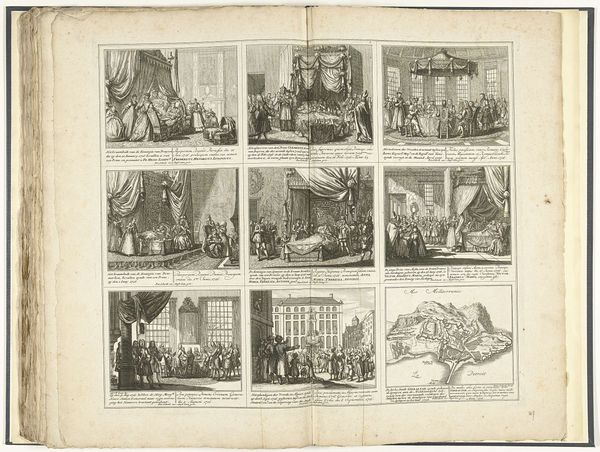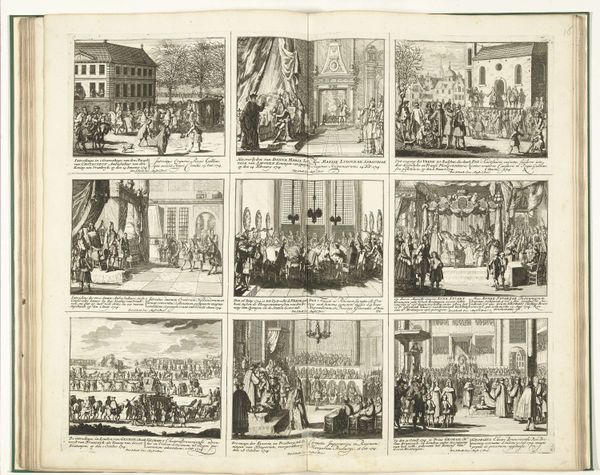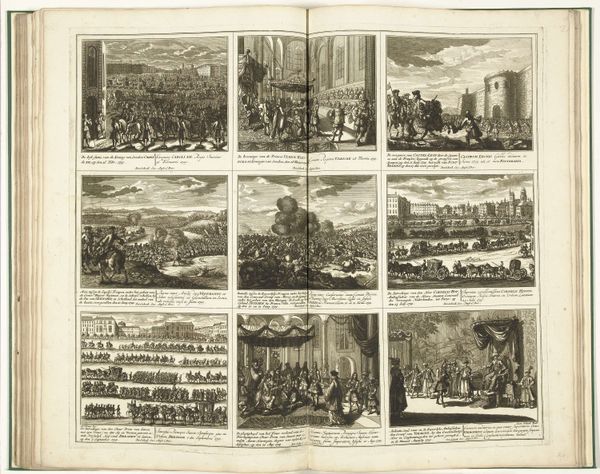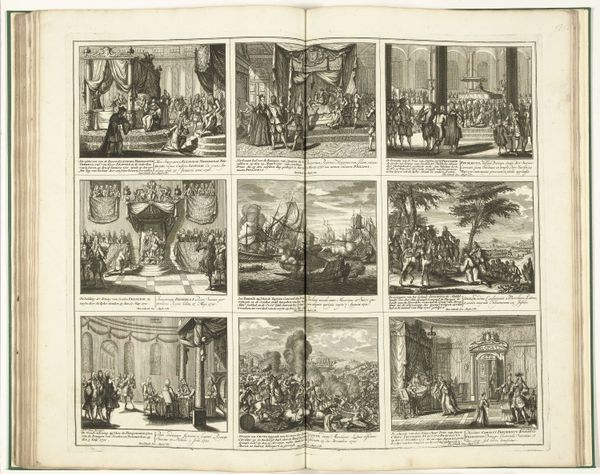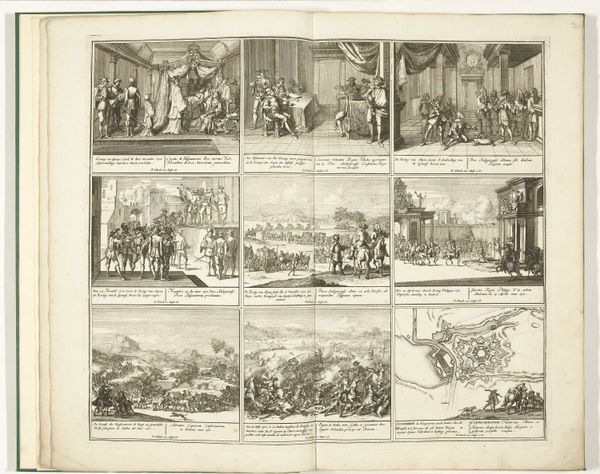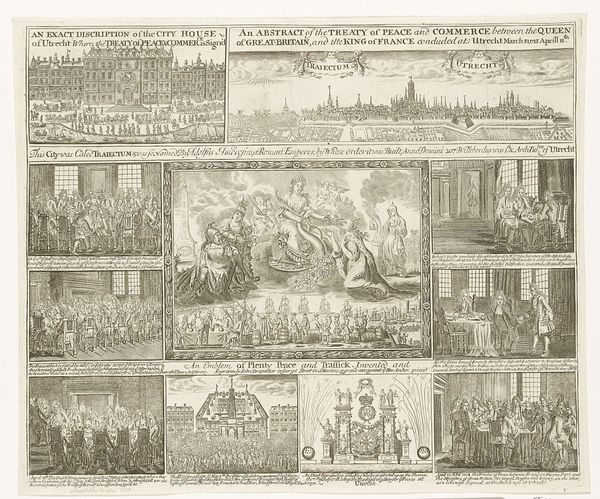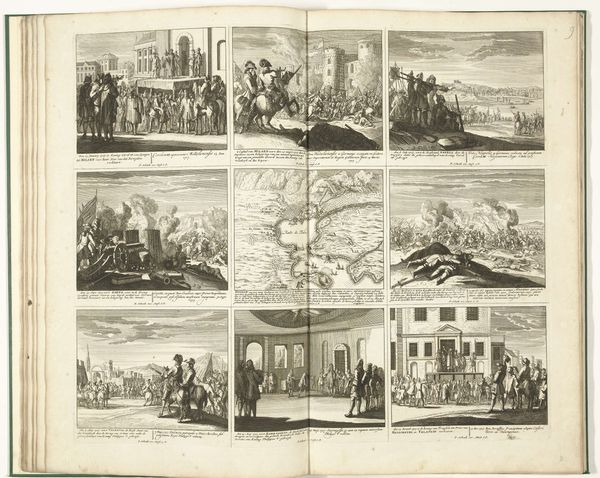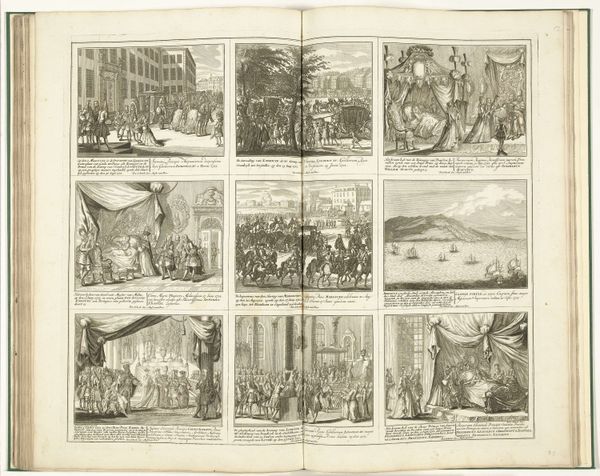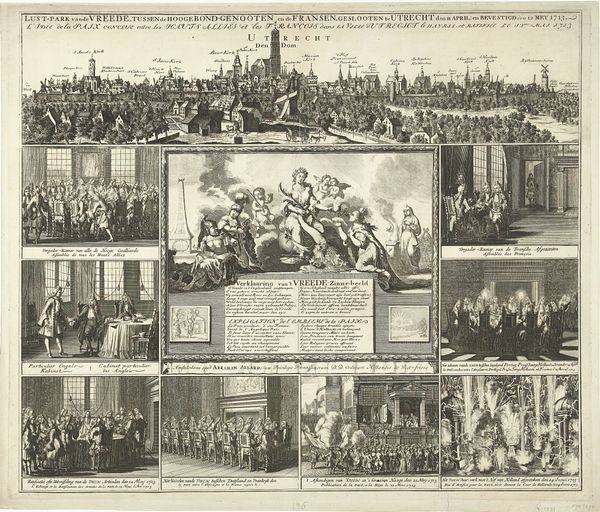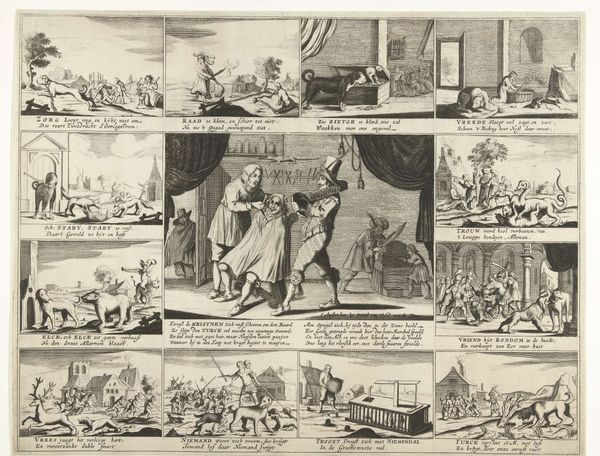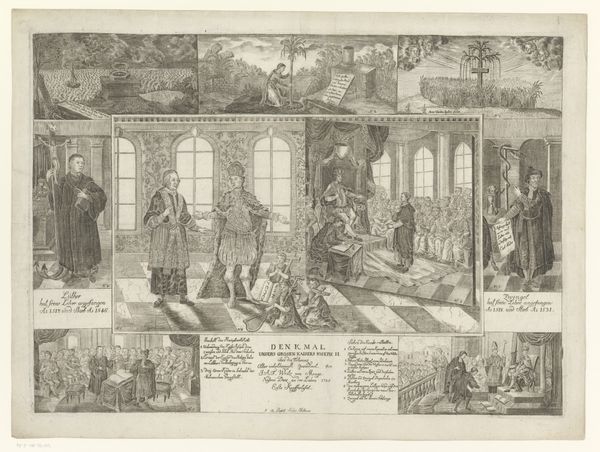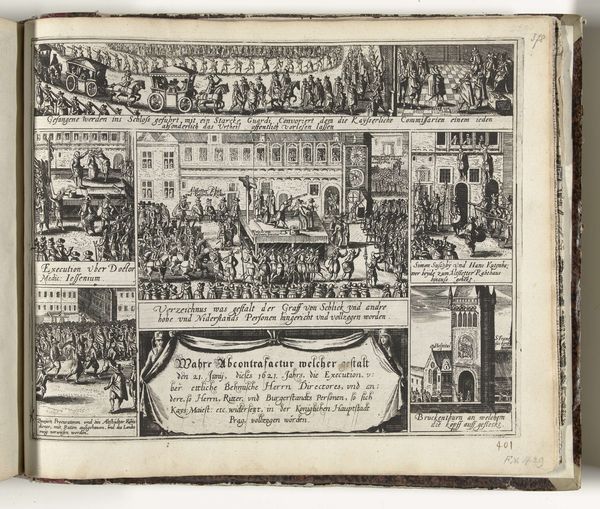
print, engraving
#
baroque
# print
#
line
#
genre-painting
#
history-painting
#
engraving
Dimensions: height 560 mm, width 670 mm
Copyright: Rijks Museum: Open Domain
Curator: Here we have "Schouwtoneel van den oorlog (blad XXVI)," which roughly translates to "Theater of War," an engraving by Leonard Schenk, likely made sometime between 1725 and 1769. Editor: It looks like a series of snapshots, almost like a comic strip, each panel showing a different scene. They feel so contained, little worlds within the larger world of the page. Curator: That's a great observation. It depicts pivotal moments related to the War of the Spanish Succession. We need to consider this conflict in the context of European power struggles and colonial expansion. How the aristocracy were solidifying dynastic power and control of land through warfare. Editor: The print itself, its creation, strikes me. An engraving implies mass production, wider access. What audience was intended for this, these "snapshots" of a distant war? Curator: Good question. These images functioned as news, shaping public opinion and collective memory. We can analyze these scenes as tools of propaganda, representing the victors' narrative and glorifying military might. Editor: Absolutely. Consider the material conditions that made this distribution possible. The printing press, the paper, the workshops where these engravings were produced. Who owned these shops? Who worked in them, and how were they compensated? It all contributed to production costs of representing and circulating political events. Curator: And we cannot ignore the power dynamics embedded within each scene: rulers, dignitaries, and soldiers. Whose stories are being amplified, and whose are being silenced or erased? Consider, too, the impact on those populations who resisted these power structures. Editor: It’s almost as if these images served the function photographs or video might today, presenting key moments for review by decision-makers and distribution amongst broader populations of society as “truth.” What sort of legacy does that leave for later interpretations of conflict and power? Curator: Exactly, by delving into these details we recognize the social and political significance. The narrative surrounding historical events shapes contemporary society's beliefs and practices. Thank you for providing us with that perspective, reminding us of these power dynamics, it is truly invaluable! Editor: Likewise. This journey is helpful because by looking closer into an image's fabrication and audience we’ve unpacked something more meaningful for listeners regarding the cost of manufacturing consent around war.
Comments
No comments
Be the first to comment and join the conversation on the ultimate creative platform.
